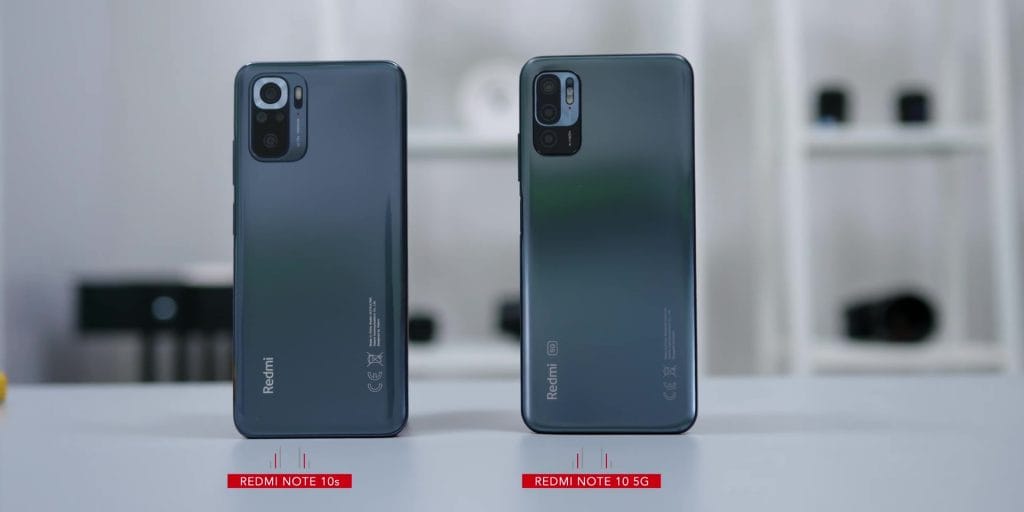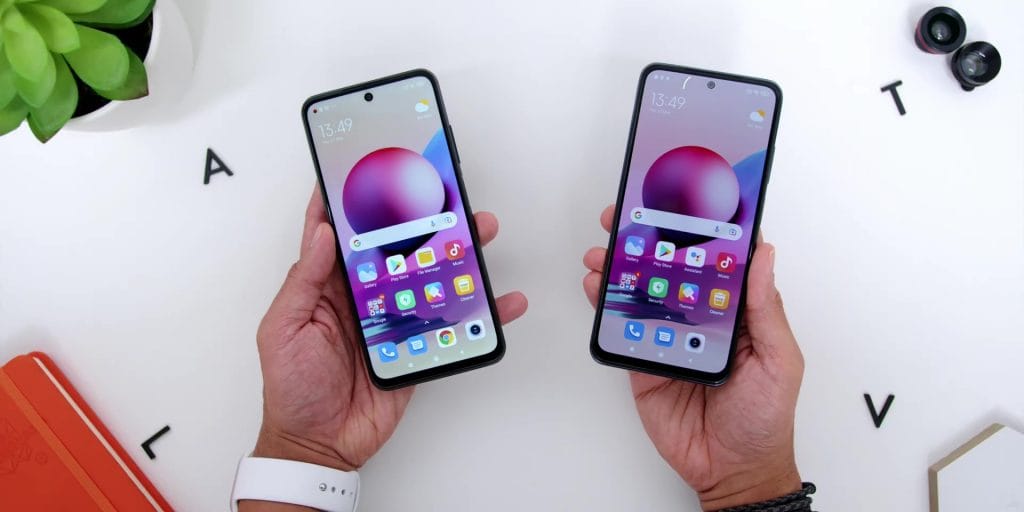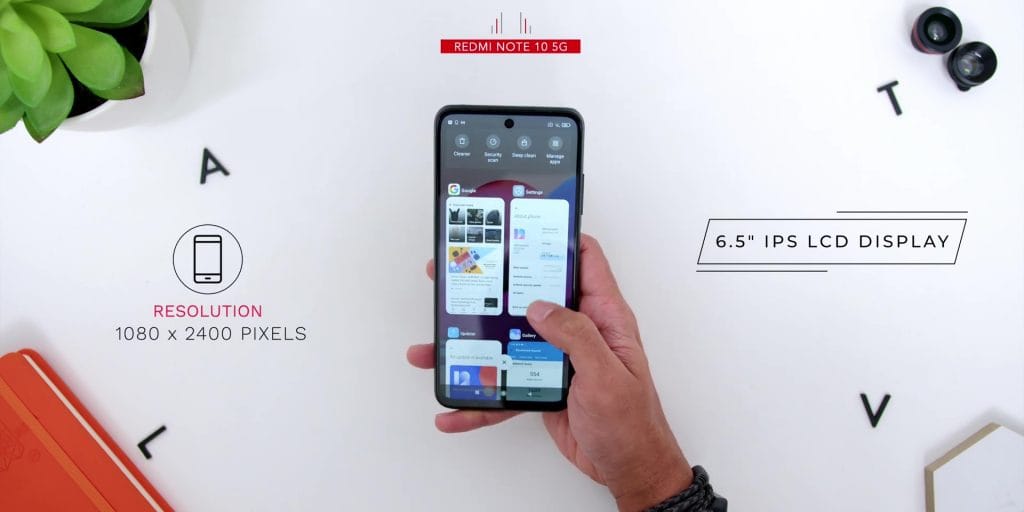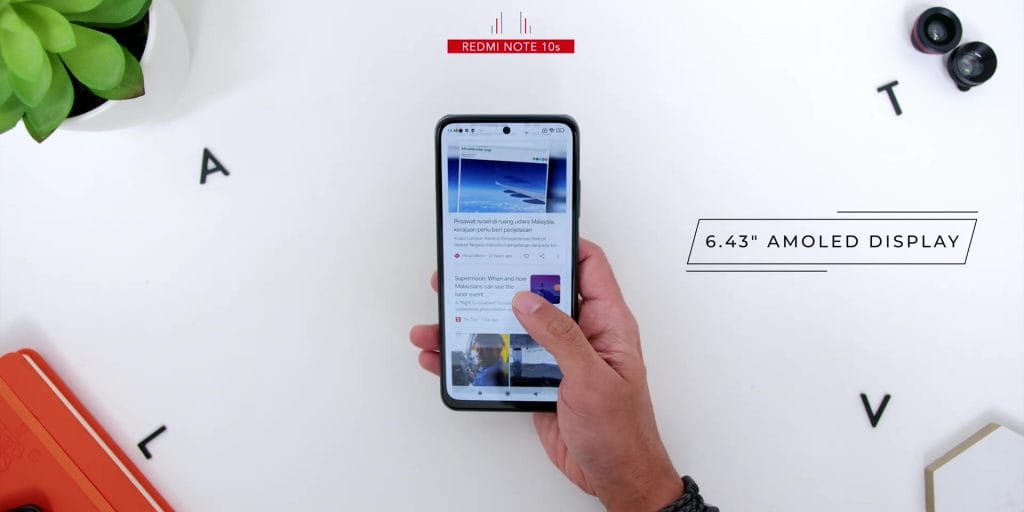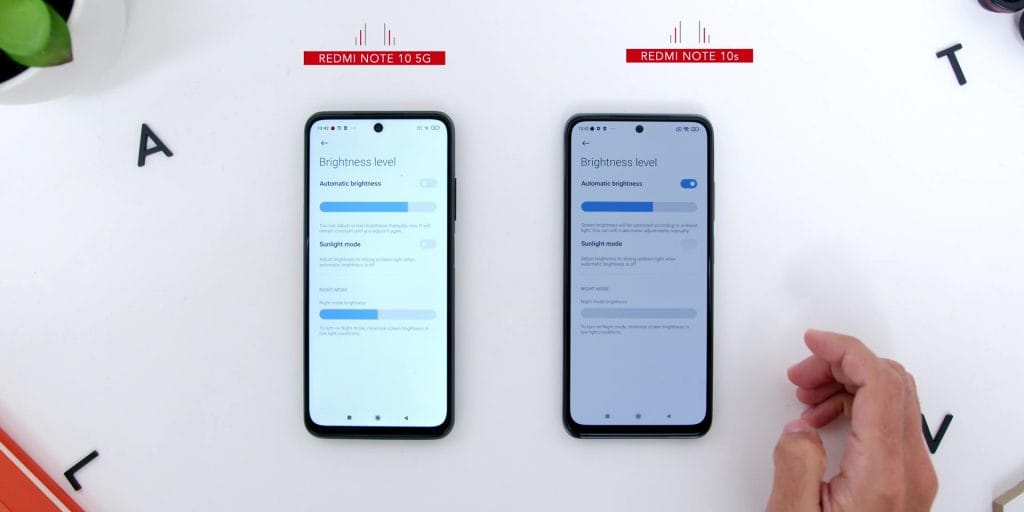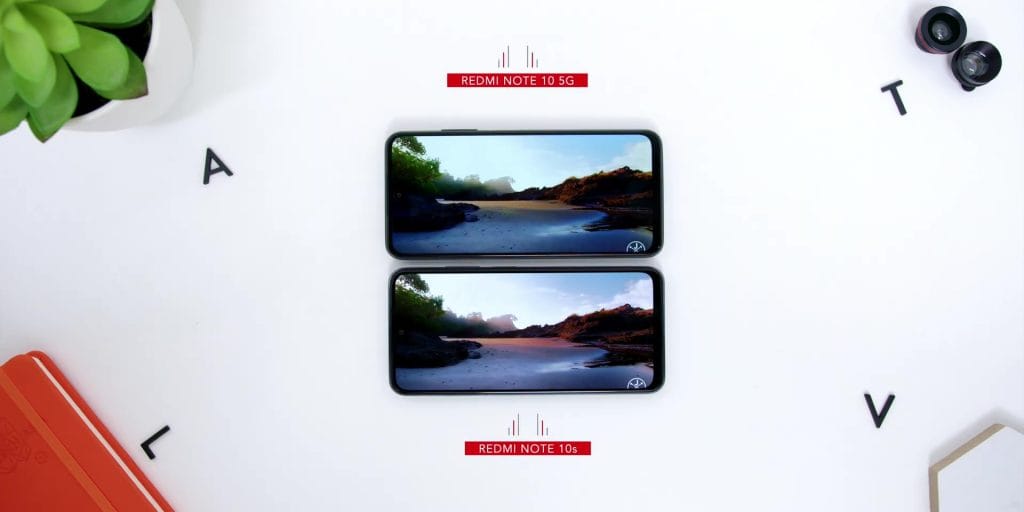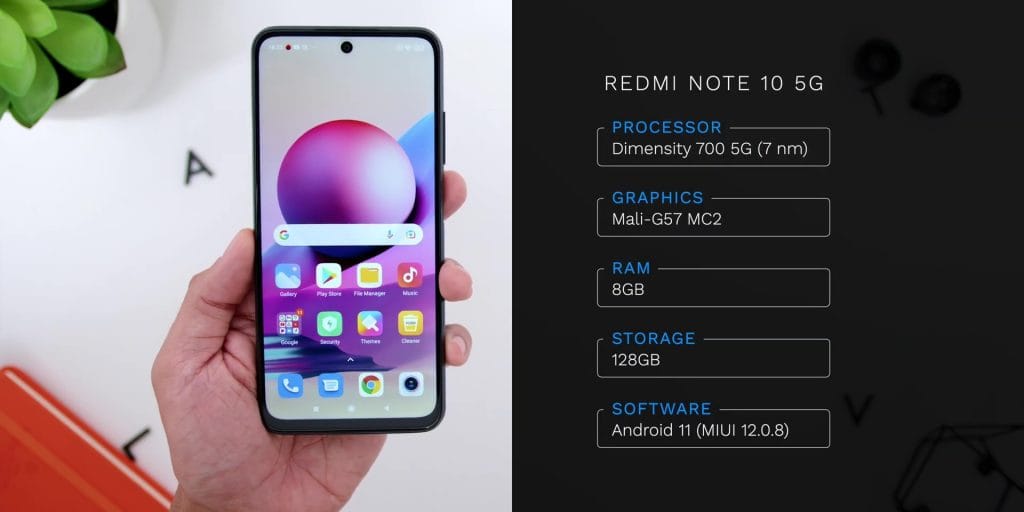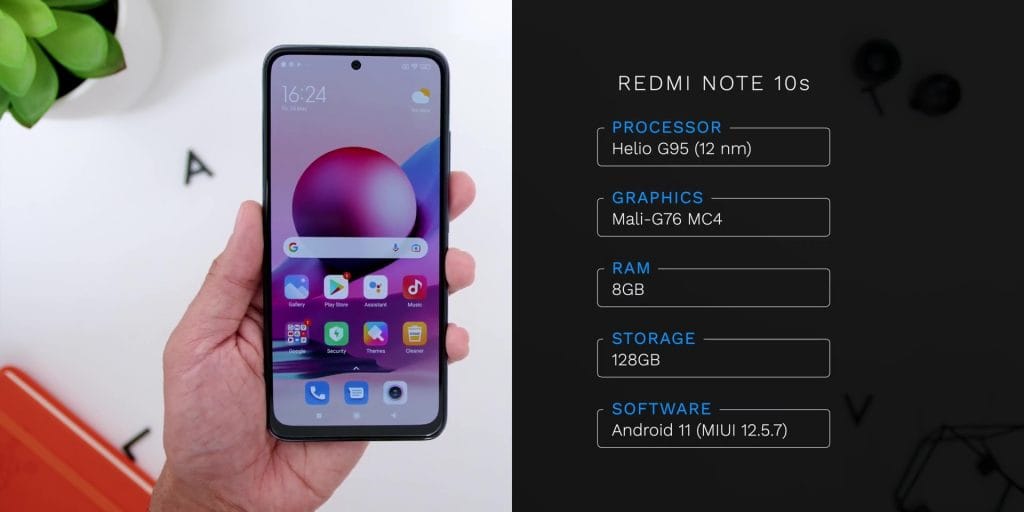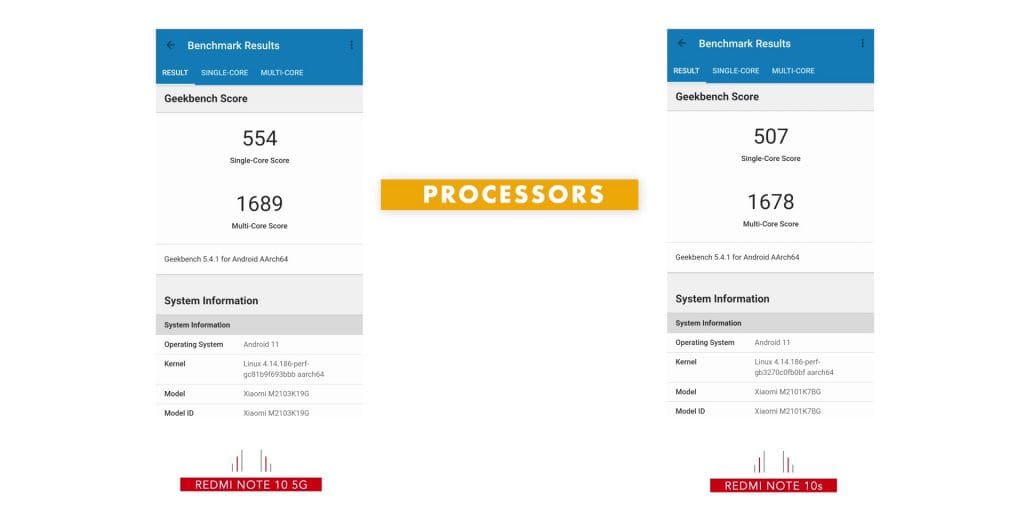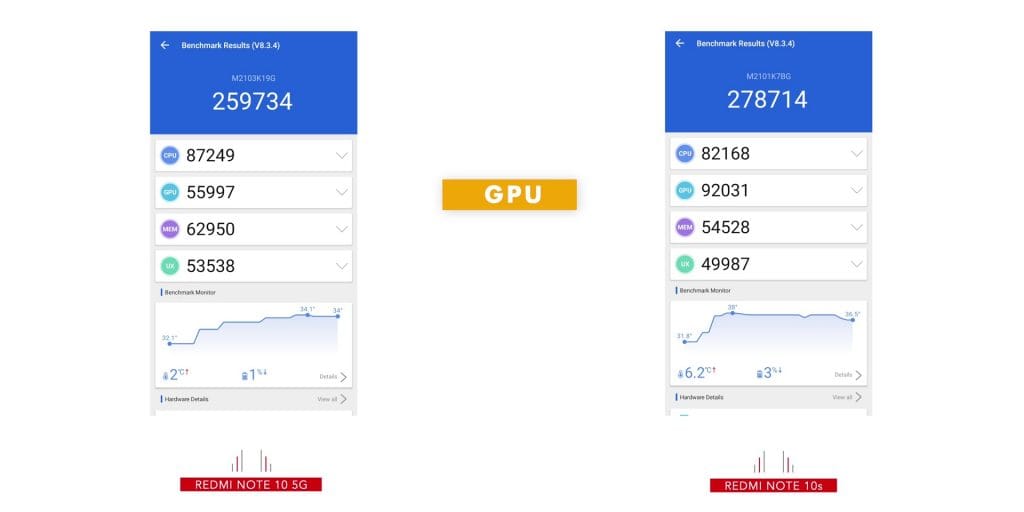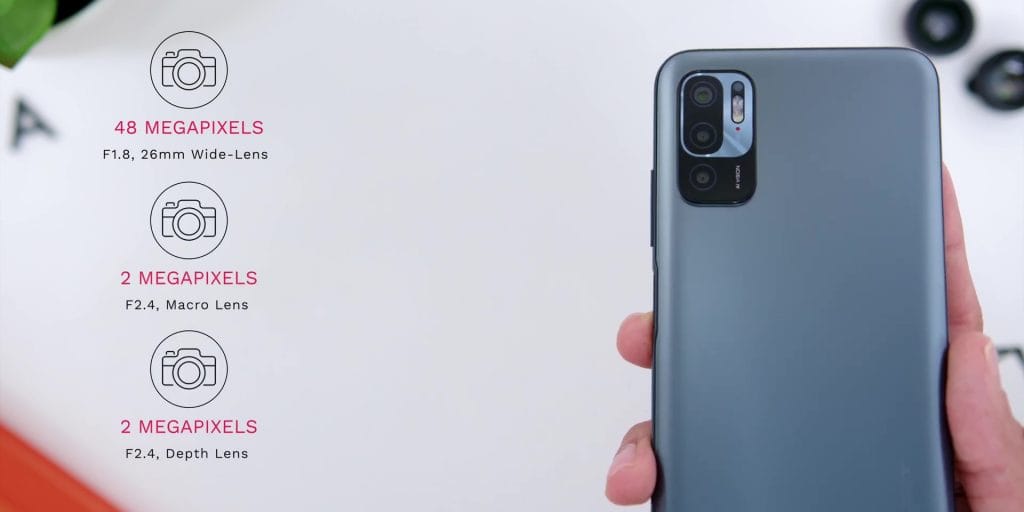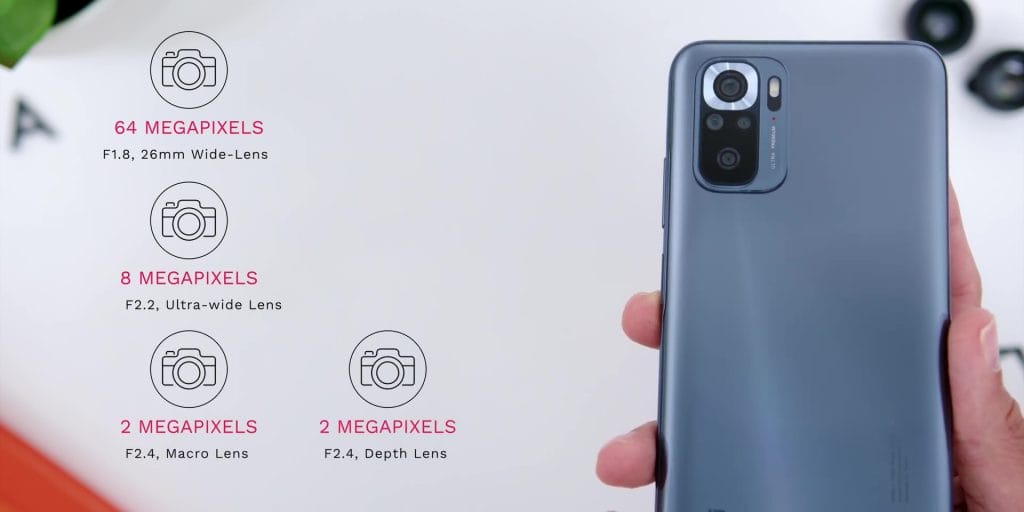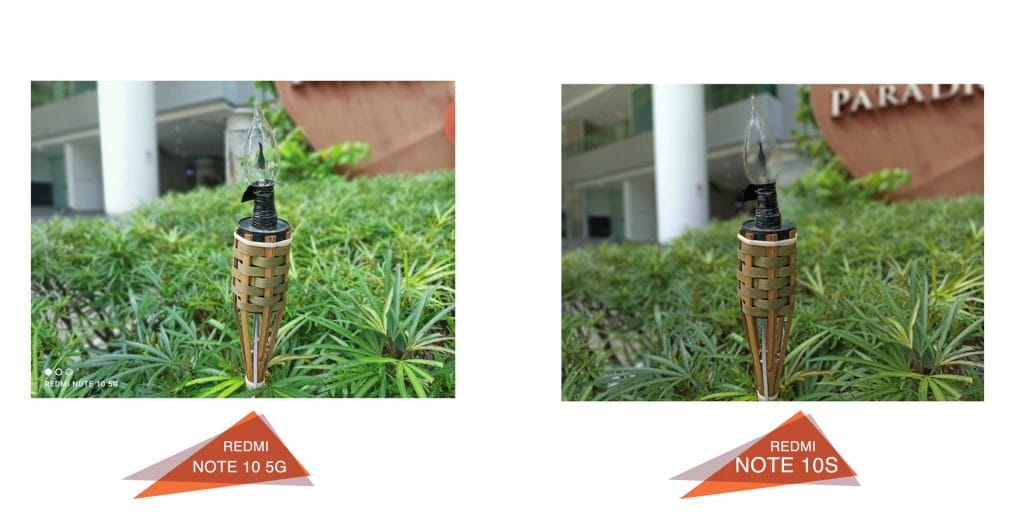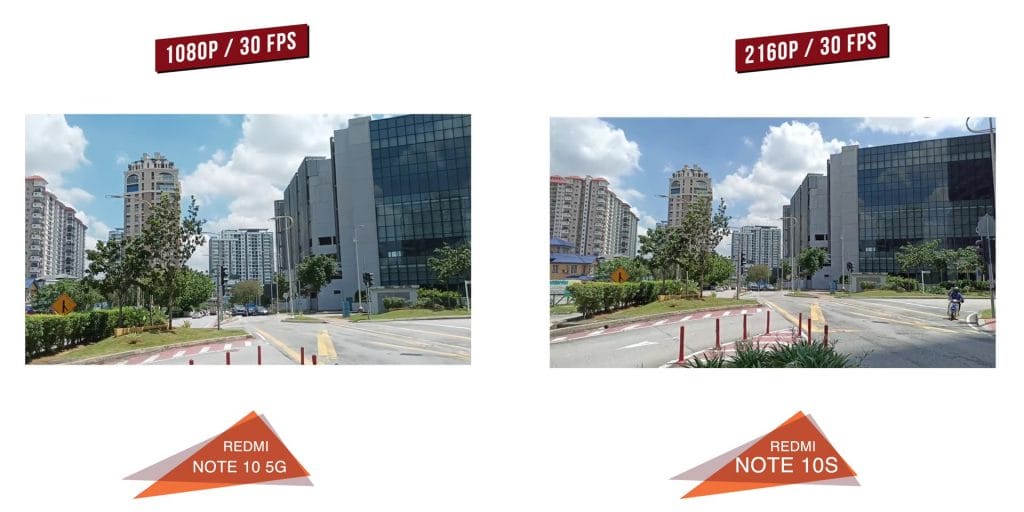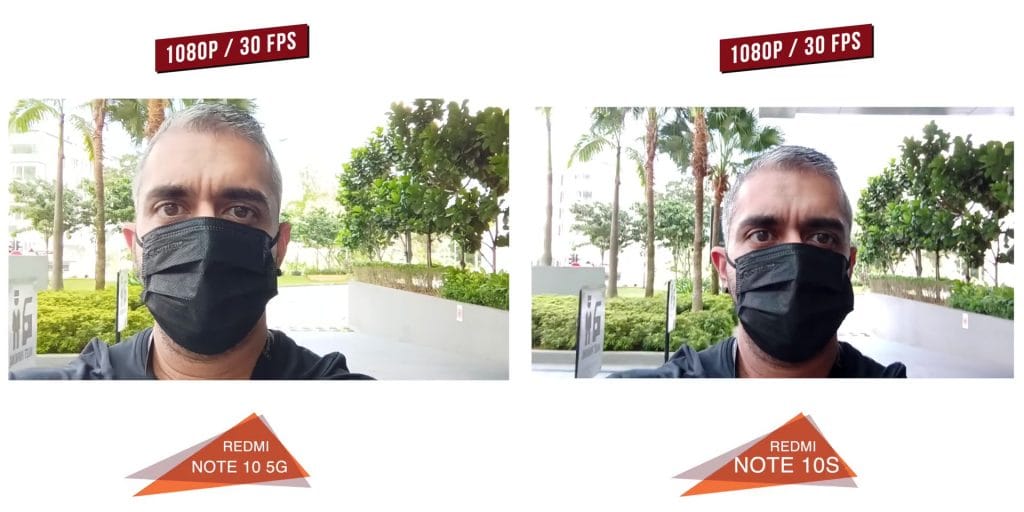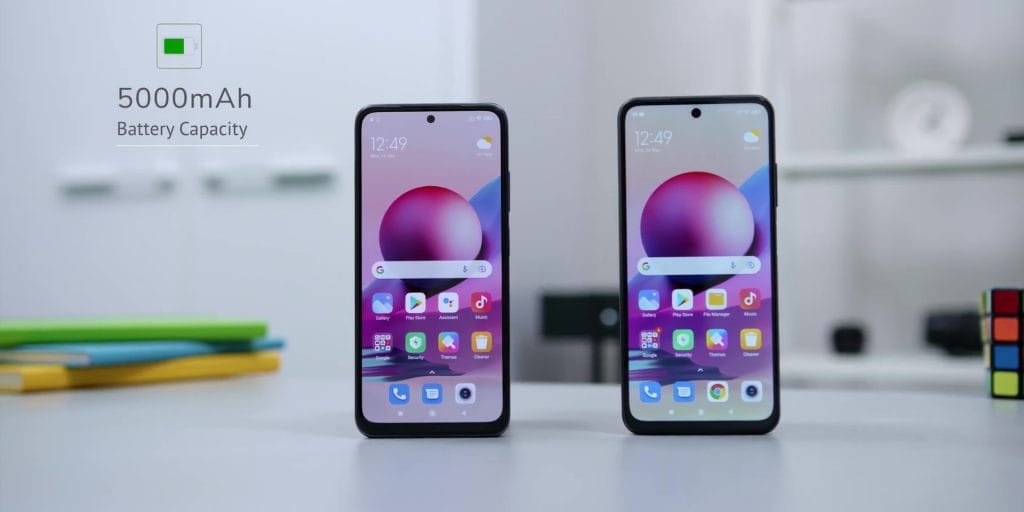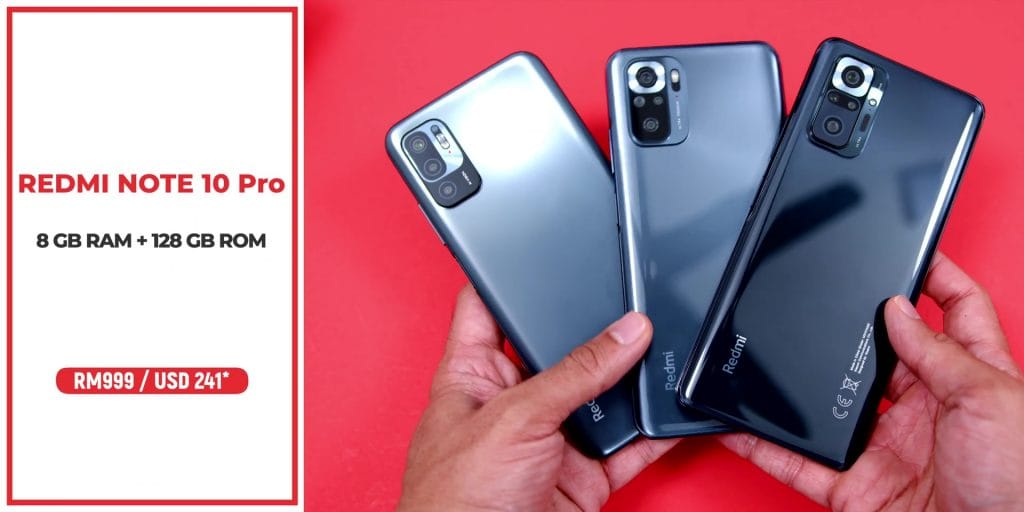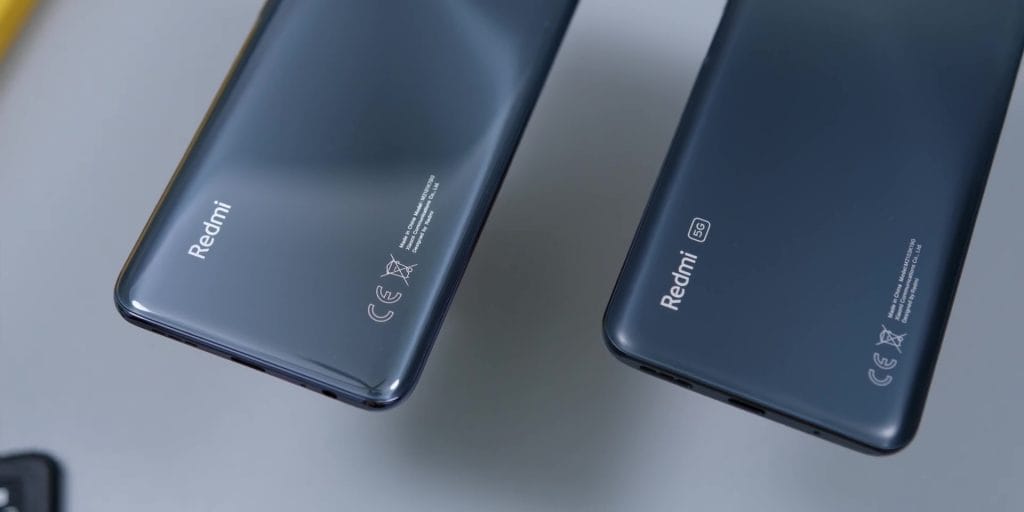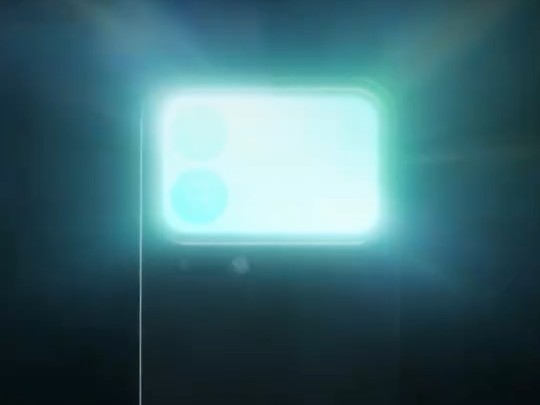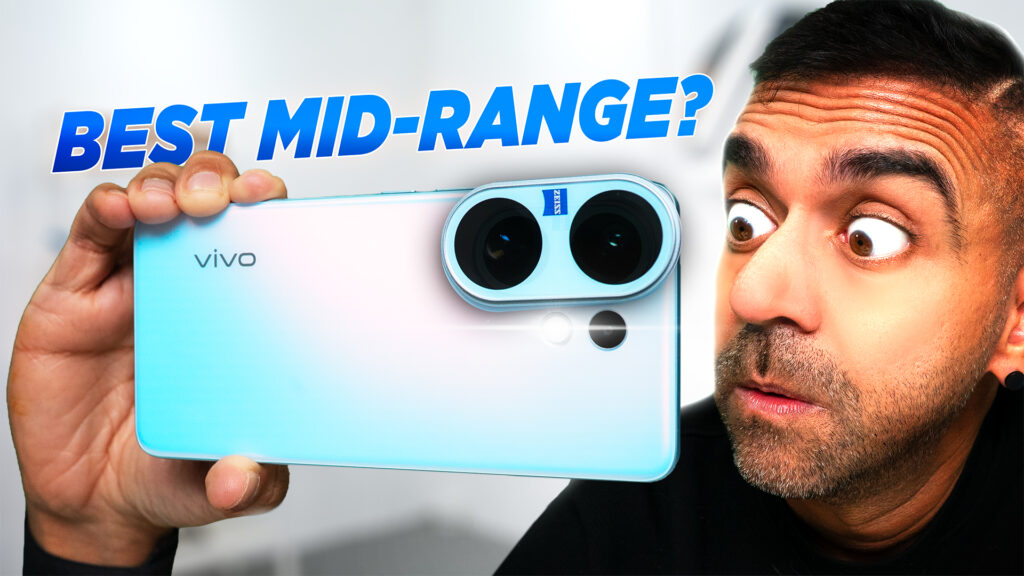Redmi is a brand known for releasing devices that are usually the best bang for your buck so when I got the new Redmi Note 10 5G and Redmi Note 10S and saw that there was only a RM100 difference between both devices, I knew that I had to put them head to head to see which device truly is the best bang for your buck.
In this article, I will compare everything about both of these devices and give you the conclusion on which phone is worth your money.
BUILD QUALITY
Now looking at both devices, they both come in a full plastic build but the Redmi Note 10 5G has a matte back finish compared to the glossy back on the Note 10S.
The matte finish gives the Note 10 5G a more premium feel but as I mentioned in my first impressions, there are certain hollow spots near the camera which are not present on the Note 10S. (Link to First Impressions video here)
Both fingerprint sensors are side mounted and are decently fast, however when you unlock the Note 10S, you can notice some dropped frames.
The two devices also have a 3.5mm headphone jack and an IR Blaster but the Redmi Note 10S does have dual speakers compared to the single firing speaker on the Note 10 5G.
[easy-image-collage id=2661]
Both devices also have a centered hole punch with the one on the 10S being slightly smaller.
So if I really had to choose between both phone’s design and build I would go with the Note 10 5G because of its overall finish.
DISPLAY
Moving on to the display, here is where things start to differ quite a bit. The Note 10 5G comes with a 6.5-inch 1080×2400 IPS LCD panel and has a 90Hz refresh rate as well which is a nice touch. The display had decent viewing angles and decent colours but you can definitely tell this is a mid range device. It also gets plenty bright so outdoor visibility should not be a problem.
The display on the Redmi Note 10S on the other hand is a smaller 6.43-inch 1080×2400 AMOLED panel but it is capped at 60Hz. It was surprising not to see a 90Hz panel included on this device as the 60Hz panel makes the phone feel slower in comparison. The AMOLED display was a nice touch as it does provide better colors and deeper blacks compared to the IPS LCD display on the Note 10 5G.
However, it does not get as bright as the Note 10 5G. Even with the adaptive brightness turned on, the display is still pretty dim.
It is also important to note that the Redmi Note 10 5G can only play videos up to 1440p but the Note 10S can go up to 2160p. I am not really sure why this is the case since both phones have the same resolution but this is something to take into account.
SPECIFICATIONS
In terms of the specs of the devices, these two devices are the only devices in this line to NOT come with a Snapdragon processor. The Redmi Note 10 5G comes with the MediaTek MT6833 Dimensity 700 5G processor which is built on the 7nm process.
This chip delivers performance similar and sometimes better than the higher end Snapdragon 600 series processors and the Snapdragon 720G as well. It also comes with the Mali-G57 MC2 GPU which allows for smooth and decent gameplay when gaming. The main highlight of this chip would definitely be the 5G capabilities it provides for a much lower cost than the Snapdragon chipsets.
The Note 10S however comes with a less efficient MediaTek Helio G95 that is built on the 12nm process. This device also comes with the Mali G76 MC4 GPU installed. So what does this mean in terms of real world use? Well if you look at benchmarks, the Helio G95 on the Redmi Note 10S is a less powerful processor compared to the Dimensity 700 series available on the Note 10 5G but in terms of the GPU, the Redmi Note 10S has the overall better GPU. Also important to note that the Note 10S does NOT come with any 5G capabilities.
SOFTWARE
In terms of software, the Note 10S comes with MIUI 12.5 based on Android 11 but the Note 10 5G comes with the older MIUI 12 based on Android 11.
CAMERAS
Now, the cameras. The Redmi Note 10 5G comes with a triple camera setup which includes:
- a 48MP f/1.8 26mm wide lens,
- a 2MP f/2.4 macro lens, and
- a 2MP f/2.4 depth sensor
While the main shooter seems like it is a capable shooter, this camera setup really is a single camera setup. As I mentioned in my first impressions, I do not understand why Redmi did not include an ultra wide camera in this device. (Link to First Impressions video here)
The Redmi Note 10S on the other hand comes with a quad camera setup which includes:
- a 64MP f/1.8 26mm wide lens,
- an 8MP f/2.2 118 degree ultrawide sensor,
- a 2MP f/2.4 macro, and
- a 2MP f/2.4 depth sensor
Compared to the camera setup on the Note 10 5G, this seems like a much more complete package.
—
Now when comparing both of the pictures side by side, since the Redmi Note 10 5G doesn’t have an ultrawide lens, I decided to compare just the main lens on each.
While the details and colors are pretty much the same, the Redmi Note 10S has better dynamic range as seen at the sky areas, and you will also see a slight color difference in the blue sky areas.
When it comes to the rear portrait mode, here is where you will see better results on the Note 10 5G with better edge detection due to the other bunch of sensors included in the camera arrays.
Then as for the selfie cameras once again the Redmi Note 10 5G is slightly better with better dynamic range for the front camera for the regular selfies.
But when it comes to the portrait selfie, the skin tones on the Redmi Note 10 5G looks pretty washed out compared to the Redmi Note 10S.
Then as for video recording, the Redmi Note 10 5G records only up to 1080p at 30 frames per second compared to the Redmi Note 10S where it records up to 4k 30 frames per second. So you will get a way better quality video for the rear camera on the Redmi Note 10S but sacrificing the image stabilization for this rear video mode. (Check out my YouTube video for full video comparison)
And while the dynamic range for the front video recording for both at 1080p 30 frames per second was equally the same, the quality of video on the Redmi Note 10S has some jittering on the footage based on every step that I took in the video. (Check out my YouTube video for full video comparison)
BATTERY
For the battery, both phones come equipped with a 5000 mAh cell which is more than enough to get through a full day but the Note 10S comes with 33W fast charging enabled and the brick included in the box but the Note 10 5G only has 18W fast charging and comes with a 22.5W charger in the box.
CONFUSING LINEUP
Now why does this really confuse the Redmi lineup of smartphones?
Firstly, the Redmi Note 10S is priced at RM899 while the Redmi Note 10 5G is priced at RM799. These are both rather weird price points to be at as the Redmi Note 10 5G is more powerful CPU wise and has 5G and of course a 90Hz display, but the Note 10S does not have 5G, has a better GPU, better cameras but only a 60Hz display, and yet more expensive than the Note 10 5G.
[easy-image-collage id=2662]
The other weird part about this lineup is that only the Redmi Note 10 5G has 5G capabilities. While 5G is not something very important, especially if you come from Malaysia, it is something which will help you to future-proof your device.
Now if I want to have a more powerful device for a cheap price, I would definitely look at the Redmi Note 10 Pro, but it does NOT come with any 5G capabilities. So in my opinion, Redmi could have done without any of these devices because Redmi Note 10 and the Note 10 Pro are both very capable devices for the price and the lineup could and should have been these two devices.
Now Redmi could have always added 5G for both phones, but instead they decided to launch a new phone just for that.
CONCLUSION
So if you guys are looking for a Redmi phone right now, but are confused over the lineup, here are a few things to consider – If you guys want to future-proof your phone with 5G, there’s only one option for you but the phone has average cameras. And if you require better cameras, you can move up the tier and opt for the Redmi Note 10S at RM899, but it only has a 60Hz panel.
However if you add the extra RM100, you will be getting the top tier Redmi device in the Redmi Note 10 Pro.
So even more confused? Well, so am I!
So to end this review, here is a message to all smartphone manufacturers:
Just focus on quality over quantity, because there is no real point of having so many devices that kind of confuse the overall lineup. Keep the focus on making a reasonable amount of devices that make sense into the lineup and offer good value for us users, especially in this day and age.
Alright guys that’s it for today and do let me know what you guys think in the comments section below. Let me know which Redmi Note 10 series that you guys would choose out of all of these releases because I would LOVE to know what your thoughts are!

